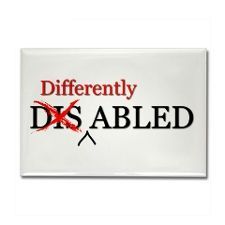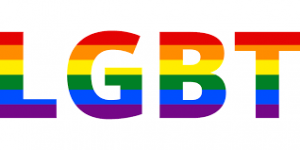Employees are not always comfortable to speak about diversity, because they are not sure what words to use. They are worried that inappropriate terms could offend others and then prefer to hold back. Establishing a language of diversity is therefore an important step on our journey towards creating a more inclusive work environment.
1) Introduction: We lack of words to talk about diversity
Despite the efforts most companies make to promote Diversity and Inclusion, we can observe that employees find it difficult to talk about this topic. There is a feeling of unease, because many of us are not sure what words to use to name the diverse groups. People are worried that they could offend others, if they don’t use the right terms, even if their intention is to be supportive.

That lack of vocabulary is creating a real barrier. Many therefore refrain from talking about the topics related to diversity and inclusion. This is a missed opportunity, because many employees would like to contribute to a more diverse and inclusive work environment.
In this article, I want to provide some concrete examples where the lack of clarity concerning the words to use when we speak about diversity is causing an issue. I will then make a couple of simple propositions how we can overcome this problem quite easily. Let’s start with a few examples.
2) Examples of language barriers
In English It is quite common to speak about female candidates. But in most Latin languages the term “female” is applicable only to animals. Using this term of females for human beings sounds therefore very rude and inappropriate in their ears. This is already causing a barrier, even if the topic of gender is usually rather less challenging to address.

Another example concerns the ethnic diversity. In the USA people talk for example about African Americans. That expression could not be used in analogy in other countries. In the same way, the term of “people of color” does not always translate easily.

Should we use the terminology of handicap, disability, limited ability or differently abled? Is it inappropriate to talk about disability?

We see that language codes have been established, which are somewhat technical and not necessarily well mastered by everyone. The “politically correct” vocabulary that we are creating to be as inclusive as possible is actually sometimes creating a barrier, especially when people have to express themselves in a foreign language. For those who may not be totally fluent in English for example, the subtle nuances of certain terms mentioned above may not be easy to grasp.

We have a similar example concerning the LGBT+ community.
 The term of LGBT+ aims again to be inclusive, but many people do not know what exactly it means. More generally speaking, many don’t know how to address the topic of homosexuality. They are not quite sure if the can use the words gay and lesbian and therefore prefer not to talk about this topic. This is counter-productive, because the gay community would actually have no issue with these terms being used and would be quite happy if the topic of homosexuality was more openly discussed in our companies.
The term of LGBT+ aims again to be inclusive, but many people do not know what exactly it means. More generally speaking, many don’t know how to address the topic of homosexuality. They are not quite sure if the can use the words gay and lesbian and therefore prefer not to talk about this topic. This is counter-productive, because the gay community would actually have no issue with these terms being used and would be quite happy if the topic of homosexuality was more openly discussed in our companies.

These examples illustrate the many language barriers we encounter when we want to talk about diversity related topics. My recommendation is therefore to provide this vocabulary, so that everyone in the organization can be comfortable talking about diversity without having the fear to offend anyone or do use inappropriate terms. I believe that this is an important step on the journey towards more diversity and inclusion.
3) How to overcome these language barriers
There are several ways overcome these barriers. 
Let me focus here on two suggestions:
a) To encourage management to name the different diverse groups when they speak about diversity
b) To leverage on internal communications so that the divers groups can speak about themselves
a) Management should name the diverse groups
When leaders speak about diversity, they often stay at a quite conceptual language. Many have become quite skillful to speak about this topic in general terms, staying rather vague instead of speaking concretely about the issues diverse groups may face.
 I would recommend that they use these opportunities to name the diverse groups. Employees will quickly notice what words to use and that it is safe to do so. This means of course that leaders themselves have to ensure first that they are comfortable themselves to name the divers groups.
I would recommend that they use these opportunities to name the diverse groups. Employees will quickly notice what words to use and that it is safe to do so. This means of course that leaders themselves have to ensure first that they are comfortable themselves to name the divers groups.
The topics that leaders can address may include the following questions:
- What is the experience that differently abled employees make in our organization?
- How can we attract differently abled talents and ensure that our work environment meets their requirements?
- What concrete measure do we undertake to reinforce ethnic diversity and why do we believe that this is relevant for our organization?
- What recruitment and selection guidelines have been established to ensure gender equality, especially at senior level?
- What are examples of homophobia in our companies and how can we create a more inclusive environment?
- These are some only examples of the way how the topic of diversity can be addressed in a more concrete and specific way. The positive side effect of naming these groups is that it helps establishing this language of diversity.
b) Internal communication
Internal communication can be used to give the word to the different divers groups. Employees will hear what words the members of these diverse groups use to designate themselves and will then feel safe to use them as well.

This will also help to go beyond the declarations of intentions that we can find in corporate diversity statement, which often remain high level and abstract. Letting the diverse groups speak about their own experience in the organization and about their expectations in view of a more inclusive environment will also help to take more specific measures for improvement.

***
I hope that this article can help on the journey of more diversity and inclusion in our companies.
More information in my book:
Sven Sommerlatte : Successful Career Strategy – An HR Practitioner’s Guide to Reach Your Dream Job (Springer, June 2023). ISBN: 978-3-662-66790-3
